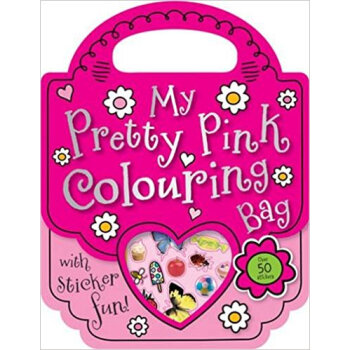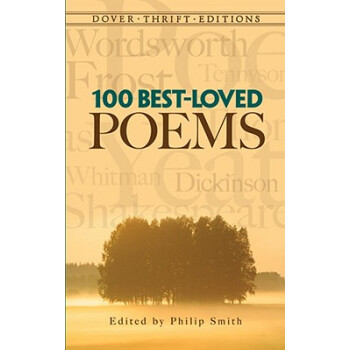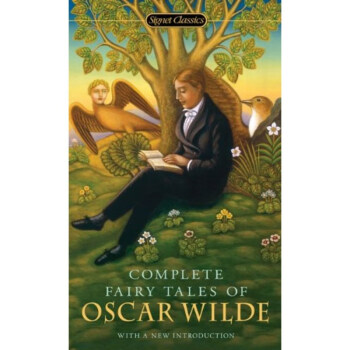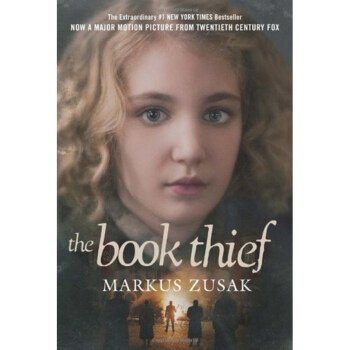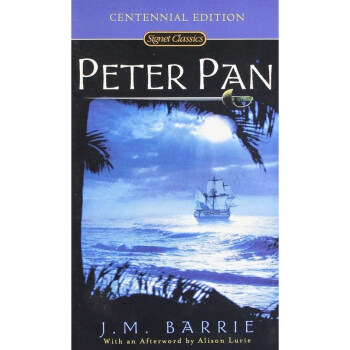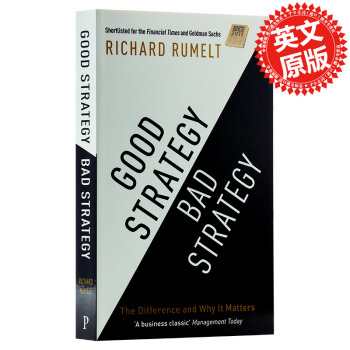![Mastering the Art of French Cooking掌握烹饪法国菜的艺术 英文原版 [精装]](https://pic.tinynews.org/19041659/rBEbSlNwZfoIAAAAAACsdeF0PFcAAAPWQDsR3IAAKyN246.jpg)
Mastering the Art of French Cooking掌握烹饪法国菜的艺术 英文原版 [精装] pdf epub mobi txt 电子书 下载 2025
- French Cooking
- Cookbooks
- Culinary Arts
- Classic Recipes
- Julia Child
- Mastering the Art
- Food & Wine
- Home Cooking
- Fine Dining
- Kitchen Skills

具体描述
编辑推荐
? the first authentic, successful recipe ever devised for making real French bread—the long, crunchy, yeasty, golden loaf that is like no other bread in texture and flavor—with American all-purpose flour and in an American home oven;? soups from the garden, chowders and bisques from the sea—including great fish stews from Provence, Normandy, and Burgundy;
? meats from country kitchens to haute cuisine, in master recipes that demonstrate the special art of French meat cookery;
? chickens poached (thirteen ways) and sauced;
? vegetables alluringly combined and restored to a place of honor on the menu;
? a lavish array of desserts, from the deceptively simple to the absolutely splendid.
But perhaps the most remarkable achievement of this volume is that it will make Americans actually more expert than their French contemporaries in two supreme areas of cookery: baking and charcuterie.
In France one can turn to the local bakery for fresh and expertly baked bread, or to neighborhood charcuterie for patés and terrines and sausages. Here, most of us have no choice but to create them for ourselves.
And in this book, thanks to the ingenuity and untiring experimentation of Mesdames Child and Beck, we are given instructions so clear, so carefully tested, that now any American cook can make specialties that have hitherto been obtainable only from France's professional chefs and bakers.
内容简介
The sequel to the classic Mastering the Art of French CookingHere, from Julia Child and Simone Beck, is the sequel to the cooking classic that has inspired a whole American generation to new standards of culinary taste and artistry. On the principle that "mastering any art is a continuing process," they continued, during the years since the publication of the now-celebrated Volume One, to search out and sample new recipes among the classic dishes and regional specialties of France—cooking, conferring, tasting, revising, perfecting. Out of their discoveries they have made, for Volume Two, a brilliant selection of precisely those recipes that will not only add to the repertory but will, above all, bring the reader to a yet higher level of mastering the art of French cooking.
This second volume enables Americans, working with American ingredients, in American kitchens, to achieve those incomparable flavors and aromas that bring up a rush of memories—of lunch at a country inn in Provence, of an evening at a great Paris restaurant, of the essential cooking of France.
作者简介
Julia Child was born in Pasadena, California. She was graduated from Smith College and worked for the OSS during World War II in Ceylon and China, where she met Paul Child. After they married they lived in Paris, where she studied at the Cordon Bleu and taught cooking with Simone Beck and Louisette Bertholle, with whom she wrote the first volume of Mastering the Art of French Cooking (1961). In 1963, Boston's WGBH launched The French Chef television series, which made her a national celebrity, earning her the Peabody Award in 1965 and an Emmy in 1966. Several public television shows and numerous cookbooks followed. She died in 2004.Julia Child(1912-2004)是美国著名厨师,作家及电视节目主持人.她通过她的第一本烹饪书《掌握烹饪法国菜的艺术》,和随后她的电视节目(其中最有名的为1963年首播的《法国厨师》)把法式烹饪介绍给美国大众。
内页插图
用户评价
这本书给我最直观的感受就是其严谨的科学性和艺术性的完美结合。作为一名喜欢尝试不同菜系的烹饪爱好者,我深知烹饪的奥妙在于对食材的理解和对火候的精准把控,而这本书在这两方面都做得非常出色。它不仅提供了详细的菜谱,更重要的是,它揭示了隐藏在每一个步骤背后的科学原理。例如,关于如何正确处理肉类,如何让蔬菜保持鲜嫩多汁,以及如何调制出层次分明的酱汁,书中都有极其深入的讲解。我尤其欣赏它对于食材搭配的建议,以及如何通过不同的烹饪手法来激发食材的最佳风味。这本书就像一位经验丰富的老师,能够帮助我洞察食材的本质,从而在厨房里挥洒自如,创作出属于自己的法式美味。它让我意识到,掌握法式烹饪的艺术,不仅仅是学会几道菜,更是一种对生活品质的追求和对美食文化的理解。
评分这本书的深度和广度让我印象深刻,完全超出了我最初的期待。它并没有停留在简单的食谱层面,而是深入剖析了法式烹饪的灵魂所在,从食材的特性到烹饪的原理,都给予了详尽的阐述。我喜欢它在介绍每一个菜谱时,都会附带一些关于这道菜的历史背景或者文化意义的介绍,这让我在学习烹饪的同时,也能够拓宽自己的视野。那些看似简单的步骤背后,其实蕴含着无数的经验和智慧。我特别期待书中关于各种酱汁的讲解,这绝对是法餐的精髓所在,也是我一直以来想要攻克的难关。这本书提供的不仅仅是“做什么”,更重要的是“为什么这么做”,这种循序渐进的教学方式,让我能够真正理解并掌握烹饪的精髓,而不是简单的照搬。我感觉这不仅仅是一本书,而是一个完整的烹饪课程,足以让我蜕变成一位更自信、更有成就感的厨师。
评分我一直以来对法式烘焙有着浓厚的兴趣,而这本书无疑满足了我对这个领域的全部好奇。从基础的面团制作到精美的甜点装饰,它都给予了最详细、最专业的指导。我非常惊喜地发现,即使是像可颂这样看似复杂的烘焙品,在书中的图文并茂的讲解下,也变得触手可及。它没有回避任何细节,从温度的控制到烘烤时间的把握,都清晰地罗列出来,让我感到非常安心。我迫不及待地想要尝试制作那些诱人的法式面包和精致的蛋糕,相信通过这本书,我能够成功地复刻出那些在高级法式甜点店里才能品尝到的美味。它不仅仅是一本食谱,更是一份关于烘焙艺术的百科全书,足以让我在这个领域里不断探索和进步,享受制作美食带来的纯粹快乐。
评分这本书简直是厨房里的圣经!拿到手里就觉得沉甸甸的,无论是纸质的质感还是装帧的设计,都透着一股经典和专业。翻开扉页,那种熟悉的、带着历史厚重感的字体瞬间就吸引了我。虽然我还没开始深入研究菜谱,光是浏览目录和前言,就已经被其中对法式烹饪的热情和严谨所打动。它不仅仅是一本食谱,更像是一次穿越时空的烹饪之旅。我尤其期待其中关于基础技巧的讲解,比如如何完美地处理黄油,如何调制出丝滑的酱汁,这些都是我一直以来想要掌握的精髓。它承诺要“掌握”这门艺术,这本身就充满了挑战和吸引力。我能想象自己在这个过程中,不仅学会了做菜,更是对食物、对文化有了更深的理解。这份厚重的期待,足以让我迫不及待地想要在厨房里动起手来,去感受那份法国烹饪的细腻与优雅。包装的细节也做得很好,每一页的排版都清晰明了,即使是初学者也能找到方向,不会感到无从下手。
评分我必须承认,这本书的出现,在我心里掀起了一阵巨大的烹饪热情。作为一名对法餐一直抱有敬畏之心的业余厨师,我一直觉得法式料理似乎遥不可及,充满了神秘感。而这本书,就像一位耐心而渊博的导师,一步步地引导我走进这个迷人的世界。它的语言风格非常直观,没有太多故弄玄虚的形容,而是将复杂的技法分解得清晰易懂。我尤其欣赏它对于食材选择和处理的细致指导,这一点对于做出地道的法餐至关重要。我迫不及待地想尝试其中的经典菜肴,从最基础的烘焙到复杂的肉类烹饪,每一项都充满了诱惑。这本书不仅仅是提供菜谱,它更是在传递一种烹饪哲学,一种对食材的尊重,对细节的追求,以及对生活的热爱。我完全相信,通过这本书的指导,我能够真正理解“掌握”的含义,并将这份艺术融入我的日常烹饪之中,为我的家人和朋友带来意想不到的美味惊喜。
评分挺好012345678
评分难得的一本书,超级厚实
评分A true classic with both simple and advanced techniques. A superb introduction for someone who is just beginning an interest in food.
评分法国人一向以善于吃并精于吃而闻名,法式大餐至今仍名列世界西菜之首。法国菜是这世界上唯一可以和中国菜相提并论的菜系。法国人对饮食的讲究程度绝对可以于我们中国人向媲美,甚至可以说她们在把饮食视之为艺术上又胜我们一筹。法国人除了对食物讲究色香味外,还特别追求进餐时的情调,比如精美的餐具、幽幽的烛光、典雅的环境等等。
评分虽然是全英文版,因为时代的关系,图片很少,都是手绘的简单说明。但是确实比较详尽。想收另外一册。
评分法国人甚至将饮食赋予哲学的意义,他们认为个人饮食应符合各自教养与社会地位。法国人还将同桌共餐视为一种联络感情、广交朋友的高雅乐趣和享受。有一位被称为“世界级膳食家”的人曾说:“感受餐桌上的就餐气氛,就可以判断这个国家国民的整体个性。”看看法国人的美味佳肴以及用餐方式,不由得会让人想起克莱德曼手指下流淌出来的串串音符,浪漫而隽永,让你充分领略法式大菜散发馨香的艺术情调。
评分还行还行还行还行还行还行还行
评分比新加坡买便宜太多了, 终于买到了,经典的Julia.准备在新家新厨房慢慢试试
评分极其不满
相关图书
本站所有内容均为互联网搜索引擎提供的公开搜索信息,本站不存储任何数据与内容,任何内容与数据均与本站无关,如有需要请联系相关搜索引擎包括但不限于百度,google,bing,sogou 等
© 2025 book.tinynews.org All Rights Reserved. 静思书屋 版权所有

![The Man in the Iron Mask 铁面人 [平装] pdf epub mobi 电子书 下载](https://pic.tinynews.org/19043445/rBEhVVKKyrQIAAAAAAruqnvqj5AAAFygwEIQwUACu7C541.jpg)
![Who Was Claude Monet? [平装] [8岁及以上] pdf epub mobi 电子书 下载](https://pic.tinynews.org/19043566/466b680c-14b9-46a9-86ee-270dd42dda78.jpg)
![Gulliver's Travels[格列佛游记] [平装] pdf epub mobi 电子书 下载](https://pic.tinynews.org/19120154/933942aa-29c1-4328-a6de-dd6f00158eb2.jpg)
![How Language Works: How Babies Babble, Words Change Meaning, and Languages Live or Die 英文原版 [平装] pdf epub mobi 电子书 下载](https://pic.tinynews.org/19388149/rBEhUlJbgscIAAAAAABSKb9xAp8AAEG6gNrLLkAAFJB485.jpg)
![Absolute Death [精装] pdf epub mobi 电子书 下载](https://pic.tinynews.org/19391229/rBEhU1JbiScIAAAAAACGAj2JMfgAAEHBQPSJmYAAIYa922.jpg)
![Gon 7 [平装] pdf epub mobi 电子书 下载](https://pic.tinynews.org/19407626/rBEhWVJbW-0IAAAAAACapXXxsXkAAEGqAK5DZsAAJq9857.jpg)
![National Geographic Readers: Anne Frank [平装] [6~9岁] pdf epub mobi 电子书 下载](https://pic.tinynews.org/19479082/53bcec4dNedbd6ba6.jpg)
![Final Crisis (New Edition) 英文原版 [平装] pdf epub mobi 电子书 下载](https://pic.tinynews.org/19489267/5472fe77Na9d6934e.jpg)
![How to Be Parisian Wherever You Are Love, Style 英文原版 [精装] pdf epub mobi 电子书 下载](https://pic.tinynews.org/19506544/546045eaNab674251.jpg)
![Absolute Sandman: Vol 02 英文原版 [精装] pdf epub mobi 电子书 下载](https://pic.tinynews.org/19524657/5462b572N1674c211.jpg)
![National Geographic Kids Fierce Animals Sticker [平装] [4-8 岁] pdf epub mobi 电子书 下载](https://pic.tinynews.org/19531866/5502c1c7N8e04852a.jpg)
![Frog and Toad and Friends Box Set 英文原版 [平装] pdf epub mobi 电子书 下载](https://pic.tinynews.org/19532502/54dbfe57N7939cc98.jpg)
